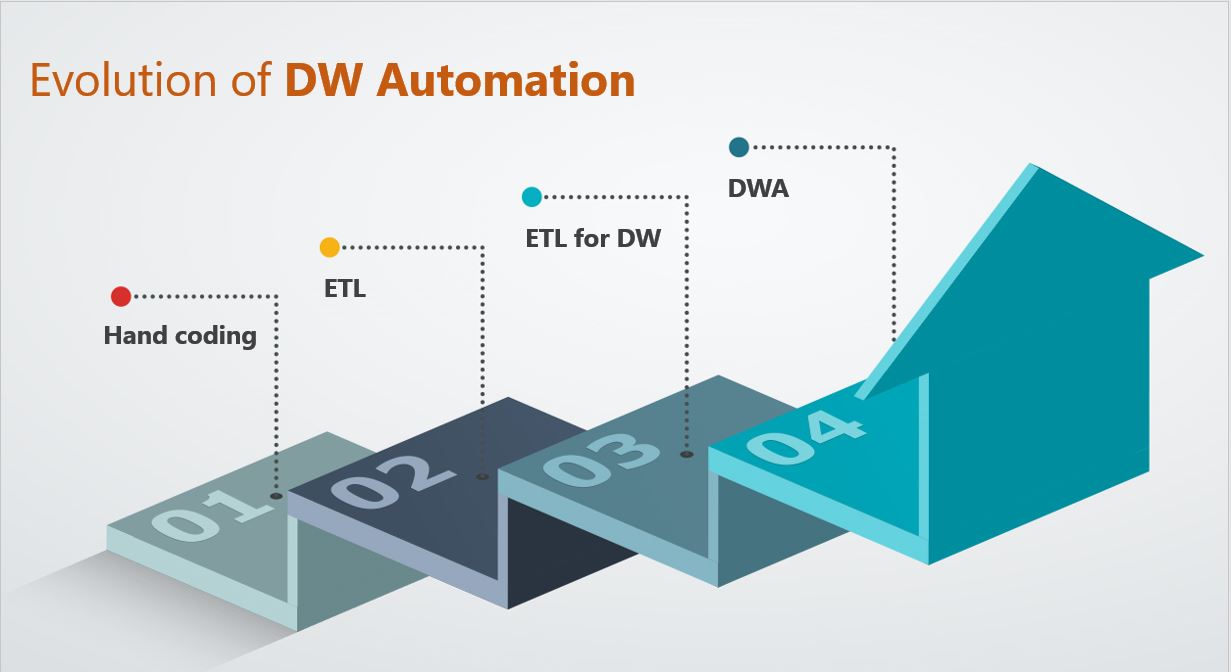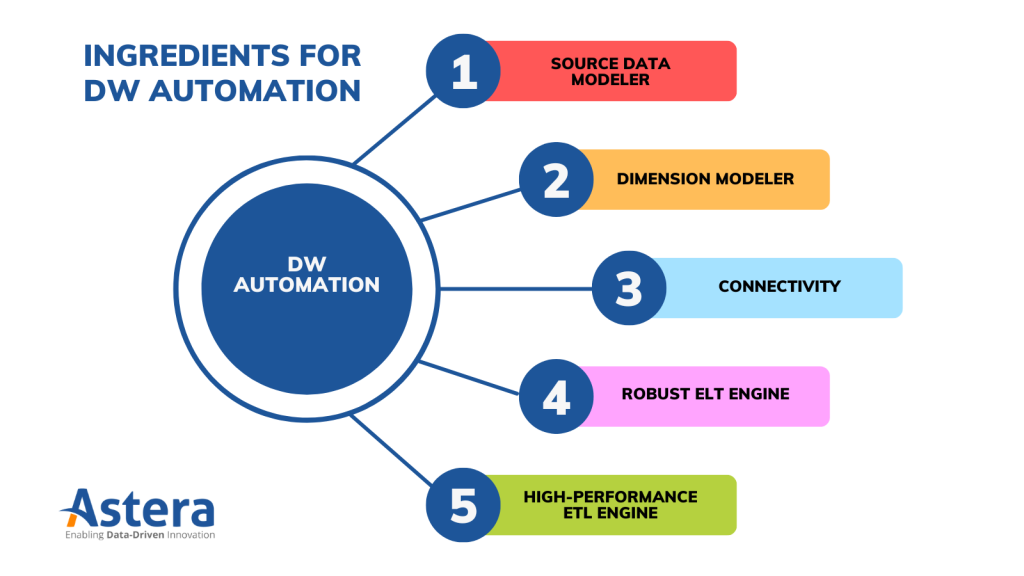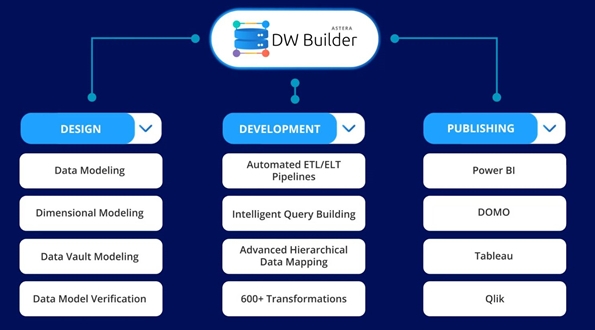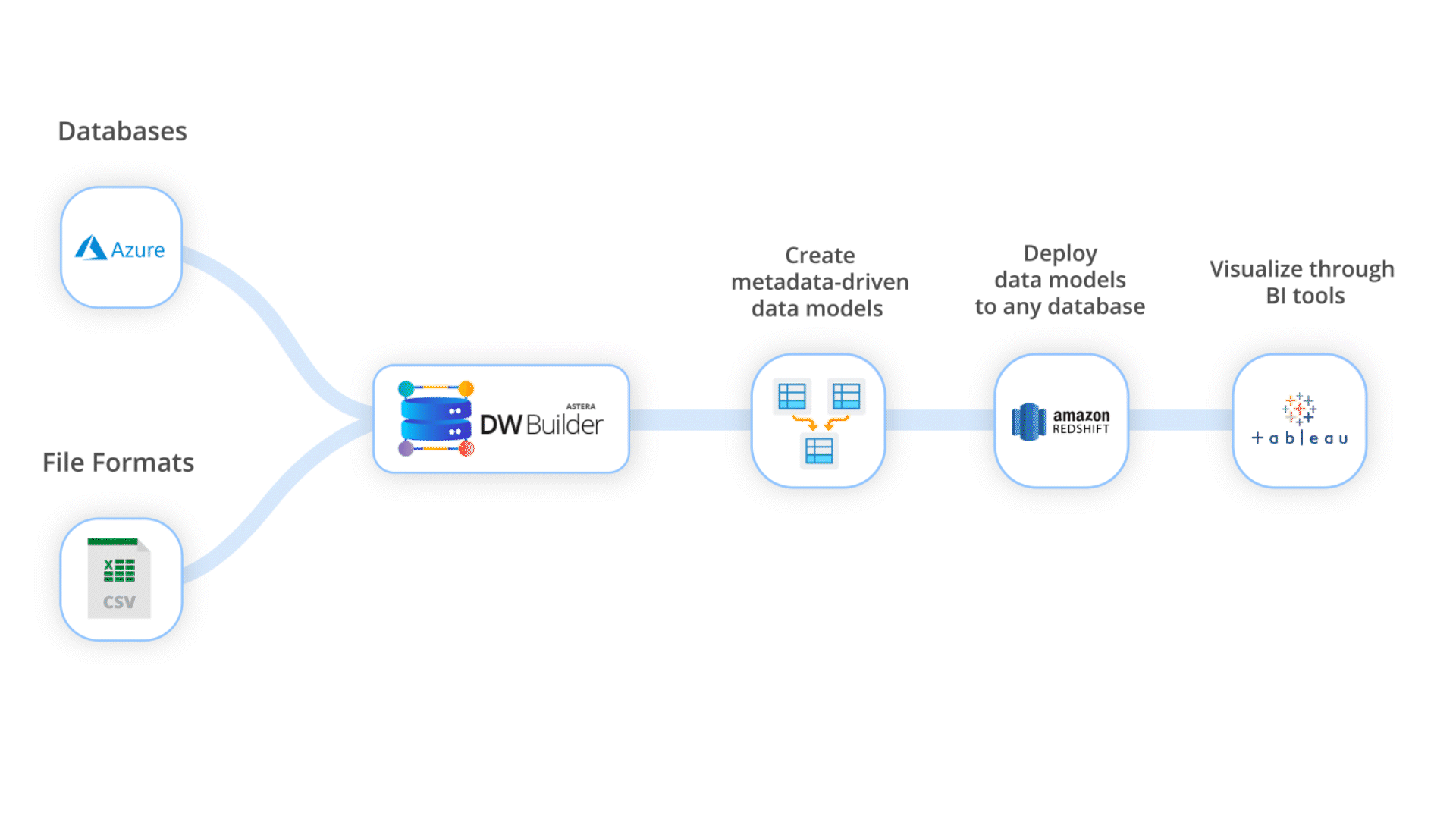
Information Marts: Enabling Agile, Scalable, and Accurate BI
Businesses need scalable, agile, and accurate data to derive business intelligence (BI) and make informed decisions. However, managing evolving data...

Data warehouse automation (DWA) is fast replacing conventional approaches to building data warehouses.
Enterprise data warehouses (EDW) are critical for utilizing historical data for Business Intelligence and reporting. But, the traditional approaches to compiling and managing colossal data volumes through manual ETL are no longer effective. In today’s competitive enterprise market, business agility and time-to-market are crucial. For such requirements, data warehouse automation software stand out in minimizing the manual efforts involved in building and deploying data warehouses and synthesizing data for business reporting.
This detailed guide will explore various aspects of data warehouse automation and how it helps simplify business processes.
An enterprise data warehouse helps centralize a business’s data from various sources and applications. As a result, it makes data easily accessible for business intelligence, visualization, and forecasting. The function of an EDW is to consolidate data from multiple departments across the organization into a centralized location.
A modern data warehouse uses next-generation technology for automation. It relies on advanced design patterns and processes to automate the planning, modeling, and integration steps of the entire lifecycle of data sets in industries. It provides an efficient alternative to traditional data warehouse design by reducing time-intensive tasks, such as generating and deploying ETL codes to a database server.
Using data warehouse design tools, businesses can execute business intelligence projects within hours compared to months at a fraction of the cost of manual programming.
The functionalities found in data warehouse automation tools have evolved over several decades. This progression is due to the growth in data storage and integration requirements. Another reason is the spread of many data sources, such as CRM systems, REST APIs, and cloud data warehouses and databases.
Here is a brief overview of the evolution of data warehouse repositories.

The various levels of data warehouse automation explained
Before traditional data warehouses, the invention of disk storage in the 1960s spurred the need for storing and processing large amounts of data in databases. These requirements enabled the development of dimensional data marts and entity relationships. By the early 1980s, several vendor-specific ETL tools and SQL-powered relational database management systems (DBMS) were available on the market.
By the next decade, the business requirements for managing heterogeneous business data evolved substantially. Data warehouse technology converged on standardized architectures, which enabled businesses to weave together data from multiple formats and sources for a consolidated view.
The inherent data warehouse development challenges, such as long development cycles, poor metadata management within the existing data warehouse, and costly development resources, made traditional data warehouse architectures unsuitable for a dynamic market.
By the turn of the millennium, businesses found that many of their systems had been poorly integrated with databases and application systems and were unable to integrate volumes of fragmented data. This paved the way for an agile platform that can automate ETL processes and easily integrate with enterprise applications.
Today, data warehouse automation tools have evolved to account for new technology and business requirements. These include real-time data extraction, analysis of cloud data and web application services, such as REST APIs and SOAP, and integration with data visualization tools.
Understanding the working of automation tools requires first looking at how traditional data warehouses operate data.
In a conventional data warehouse design, all data goes through three distinct stages:
Usually, a user must define the ETL processes from scratch to move the data from the data warehouse to front-end BI tools.
The manual coding for ETL and data cleaning tasks also makes data warehousing projects error-prone and time-consuming. Because of this, business users often have insufficient accurate data available for reporting and face higher risks of budget overruns and project failures.
A data warehouse automation software offers a code-free and fluid approach to aggregating disparate enterprise data from source systems to a data warehouse and beyond. Unlike in traditional data warehouse architecture, the software automates batch execution and ETL code deployment requirements of the data warehousing process. Built on agile methodologies, some of the most prominent data warehouse automation ideas utilize a variety of functionalities, including:

Automated Data Warehousing Journey
A data warehouse software facilitates automation and simplifies data warehouse projects in the following ways:
In short, data warehouse automation software help companies create and manage data warehouses more smoothly compared to traditional data warehouse design tools. Although the capabilities of these solutions vary, enterprises can expect common design patterns and functionalities to meet their business objectives. It is always better to go for a data warehouse cost comparison of various tools before you decide on the right data warehouse automation tool.
Below are some of the steps an organization needs to assess before opting for a data warehouse tool:

Automated software allows enterprises to secure a market edge with the following benefits:

Astera DW Builder is an automated, end-to-end data warehousing solution. It allows users to design, develop and deploy their own data warehouse without writing a single line of code. The solution features a robust data model designer that supports subsequent data processes, such as data mapping, and fact and dimension data population. In all, the Astera DW Builder is designed to enhance ROI, save time, and improve business intelligence, data security, and data quality capabilities.
Establish code-free connectivity with your enterprise applications, databases, and cloud applications to integrate all your data.
Let’s Connect Now!